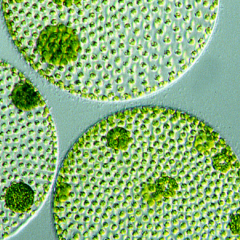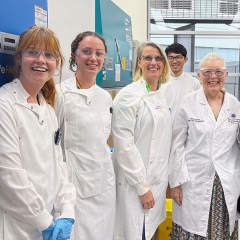Researchers have generated the first comprehensive genetic blueprint of a developing mammalian organ, shedding light on the genetic and molecular dynamics of kidney formation.
Researchers from the Cincinnati Children's Hospital Medical Center, the Institute for Molecular Bioscience at The University of Queensland, and Harvard University created a detailed genome-based atlas to serve as a resource for understanding healthy and abnormal kidney development and disease.
The atlas shows how the entire genome is regulated to produce thousands of specific genes that are mixed and re-mixed to form genetic teams.
The teams worked together to direct formation of 15 embryonic compartments in the developing kidney – from the earliest phases when stem cells are told how to differentiate into specific kidney cells to the development of nephrons, the kidney's primary functioning unit.
Given that about one in every 500 births results in a kidney development abnormality, the study is a beginning for providing new insight into genes and genetic programs that are critical to determining how kidney stem cells develop into structures in the adult kidney.
“Researchers can refer to the atlas to see the gene expression patterns in a normal developing kidney,” Professor Melissa Little, who led the Australian team, said.
“It will provide a basis of comparison for scientists studying abnormal kidney development, so they can see where gene interactions have gone awry to produce the abnormality.”
The researchers created the atlas by analysing mouse embryonic kidneys aged 15.5 days.
At this developmental time point, multiple stages of kidney formation can be studied at once because of how the organ develops.
The organ's outer layers contain early stem cells that are still differentiating to become specific cell types, while inside the organ, cell-based structures are forming at intermediate and more mature stages.
One of the study's more unexpected discoveries was the observation of new domains of gene expression that marked clusters of cells not previously known to be distinct.
These discoveries came from the careful validation of gene expression in the developing kidney, which was performed using the robotic gene expression analysis platform operating within the Institute for Molecular Bioscience.
The data from the study has been released as an open-access resource for researchers around the world as part of the GenitoUrinary Development Molecular Anatomy Project (www.gudmap.org), a consortium of laboratories funded by the National Institutes of Health to provide research tools for studying the genitourinary tract, including molecular atlases of gene expression in developing organs.
The study was led by Dr Steven Potter from Cincinnati Children's Hospital Medical Center and published on the cover of the current issue of Developmental Cell. Funding support came from the National Institute of Diabetes and Digestive and Kidney Diseases (NIDDK), a branch of the National Institutes of Health (NIH). The NIDDK (www.niddk.nih.gov) conducts and supports research in diabetes and other endocrine and metabolic diseases; digestive diseases, nutrition, and obesity, as well as kidney, urologic, and hematologic diseases.
Media contacts:
Professor Melissa Little – 07 3346 2054
Bronwyn Adams (IMB Communications) – 07 3346 2134 or 0418 575 247
Genetic blueprint revealed for kidney design and formation
11 Nov 2008



